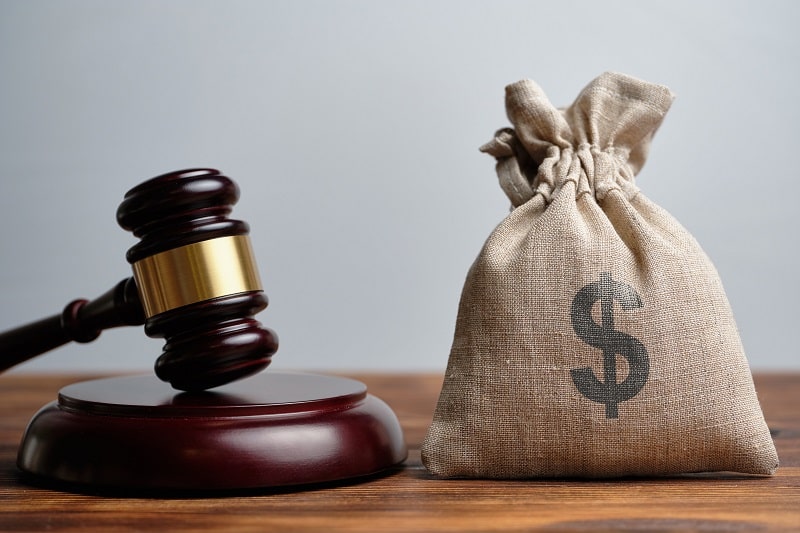When attempts to collect a debt through those annoying collection calls and strongly worded letters are unsuccessful, a creditor’s last resort is to file a lawsuit for unpaid funds. If the court finds that you owe the creditor money, the court will order the debt paid. Unfortunately, even if you do not have the cash to pay off debt, the Court’s ruling is all the ammunition the creditor needs to collect from you – whether you can afford to pay or not.
If you are facing a debt collection lawsuit, it can be nerve-wracking and stressful. But the court’s involvement does not need to be scary. In fact, sorting out your financial obligation to a creditor in court can sometimes even work in your favor – collection calls will stop and you could even walk away without having to pay the creditor a dime. So, how does a debt collection lawsuit work? Here is the step-by-step process to give you an idea of what to expect should you find yourself in court with a creditor.
1. The creditor files a lawsuit
When the creditor is unsuccessful in collecting a debt from the consumer, the creditor may turn the account over to a collection agency or third-party debt buyer to continue collection attempts. If the debt remains unpaid, the owner of the debt, either the original creditor or third-party debt buyer, can file a lawsuit to recover the unpaid funds. Once the lawsuit is filed, the consumer must be provided with notice of the pending lawsuit. The consumer will be served, likely through mail or hand-delivery depending on what is required in the jurisdiction, with a copy of the court summons and complaint. The complaint is an especially important part of the lawsuit, as it contains the list of allegations against the consumer. In other words, the complaint is a list of reasons why the creditor has sued you and why you should be required to pay.
2. The consumer responds to the lawsuit
The consumer must respond to the complaint by providing an answer to each allegation. The response is time-sensitive and failure to respond to the complaint promptly can be treated as an admission of responsibility and used to support the entry of a judgment against the consumer. Therefore, it is imperative that the consumer carefully review the complaint in its entirety and file an answer with the court that addresses each allegation in the creditor’s complaint, either admitting to it, deny it, or stating that more information is necessary for the consumer to be able to admit or deny the claim.
The answer is also where the consumer will assert any defense or counterclaims. It is important to consult an experienced consumer litigation attorney in preparing a response to a debt collection lawsuit, as some defenses and counterclaims must be raised in the consumer’s filed answer or are deemed waived.
3. The search for evidence begins
Both parties involved in the lawsuit must present evidence to the court to support their respective claims. The process of gathering this evidence is called discovery. It includes gathering documents, interviewing witnesses, hiring expert witnesses, and collecting any information that can be used to help build and support the case. At trial, this evidence will be presented to the court to assist with ruling on the case.
4. The case is presented to the court
It is typical for the creditor to file a summary judgment motion before the case goes to trial. Essentially, this is the creditor’s request for the court to rule in favor of the creditor on the basis that the consumer’s answer does not dispute any of the material facts of the case. Like with the complaint, the consumer will be allowed to respond to the summary judgment motion. To avoid having a judgment entered, the consumer needs to work with an experienced attorney to ensure that the matter is heard before the court so that the consumer can have an opportunity to defend himself or herself and present any counterclaims that may be available.
Going to trial in a debt collection lawsuit is not typical. Litigation is expensive and ultimately, the creditor wants to be paid – not spend money. Therefore, many debt collection cases settle before trial or a summary judgment is entered due to the consumer’s lack of response to the complaint or summary judgment motion. A skilled, effective defense attorney can often negotiate an affordable payment plan for the consumer as part of a pre-trial settlement. However, in those rare cases that do proceed to trial, the creditor and the consumer will both be allowed to present their case to the court where a judge or jury will decide if the consumer owes the creditor money.
5. The case is settled, or a verdict is rendered
It is common practice in debt collection lawsuits for the parties to settle before trial. When this happens, the case may be dropped or a consent judgment, agreed to and signed by the consumer, may be entered to secure the terms of the settlement. However, if the case proceeds to trial, a verdict is entered: either the consumer is responsible for the debt or not. If the court decides the consumer is responsible for the debt, a judgment will be entered against the consumer which can then be used by the creditor to collect the debt through forceful collection tactics like bank levies, property liens, wage garnishments, and even seizure and sale of personal property. The remedies for enforcing a judgment vary by jurisdiction but are severe. Therefore, it is crucial that a consumer-facing a debt collection lawsuit work with an attorney to protect the consumer’s rights, finances, and property.


